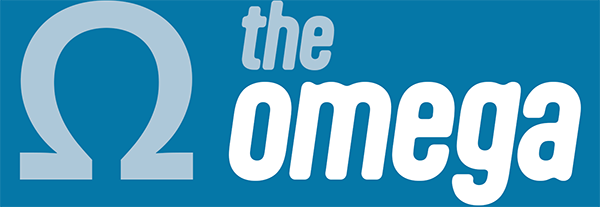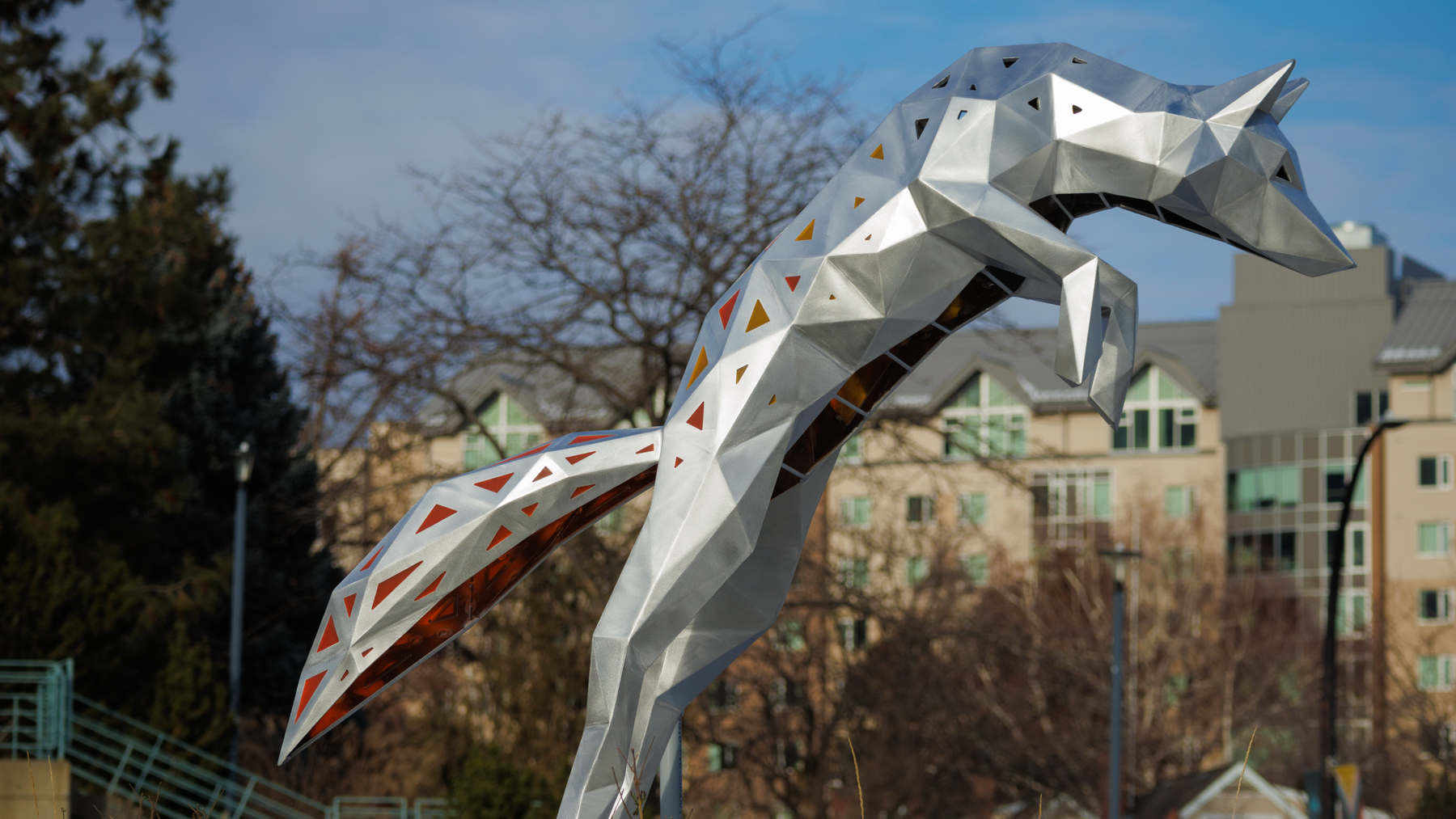In Kamloops, it’s not wholly surprising to walk out into our front yards only to encounter one of the many types of wildlife that live and play in our city. Recently, a family of four, very unique, extremely special creatures found their way onto campus, claiming TRU as their new home.
Four aluminum fox sculptures now surround the WolfPack flag in the west roundabout, positioned in sequence, showing them as if they were jumping and landing. Each figure was finished with small triangular cutouts throughout its body to provide an artistic touch and all four rest atop individual silver platforms that pop out of the grass. This, TRU’s newest art installation, depicts the fox from a traditional Secwépemc story and trotted its way onto campus over the winter break.
“They wanted to bring some Indigenous storytelling to life,” Bill Frymire, the installations artist, told the Omega. “The fox was the chosen animal. There’s a really cool local Secwépemc story [about it].”
According to Frymire, the piece retells the final portion of a Secwépemc story in which a fox repeatedly jumps over a coyote to bring it back to life. To symbolize this, Frymire placed small orange acrylic inserts underneath the triangular openings in each sculpture.
Starting with the first statue, the amount of colour is limited, visible only in the fox’s tail. The prominence of colour progressively increases with each art piece — culminating with the final fox in a landing position with orange layered underneath it from chin to tail and accented elsewhere.
“With the final one, all of the cutouts within the fox’s body, including the eyes, have this sort of orange colour. It represents Coyote coming back to life,” Frymire said.
Frymire said he interprets the story as teaching people “to be grateful for what they have and not covet the life that other people have.”
The fox, or xgwélemc, joins the statues of its cousins, the wolf (mélemst̓ye), situated inside the Eastgate roundabout and the copper-coloured coyote (sk’elep) atop the Brown Family House of Learning as one of the most recent animal-themed displays at the university.
Frymire, who was initially approached by TRU approximately two years ago for the project, said it took him a year to complete.
Using digital modelling, he started the painstaking process of turning his vision into reality.
“This was very complex with all of the angles fitting together, so it took a long time to [test it] and get it to where it [worked]. It actually kicked my butt for the first couple of months,” Frymire said.
Once the designs were finalized, the aluminum was cut using a computer numerical controlled (CNC) router machine. Afterward, the pieces were meticulously bent and welded to achieve the final product.
“Each fox took about a hundred hours of machine time cutting to get all of the angles — so when it folded up, it all matched up perfectly [and] could be welded,” Frymire said.
The artist attributed much of the art piece’s success to others who had helped him along the way. He referenced Janice E. Billy’s knowledge about the Secwépemc story, his friend William McAusland’s help in the early stages, and TRU instructor Clement Yeh’s assistance in the final portion of the project. He also had support from various local welders and assistants.
A plaque explaining the fox’s story is expected to be put up at the location soon.

